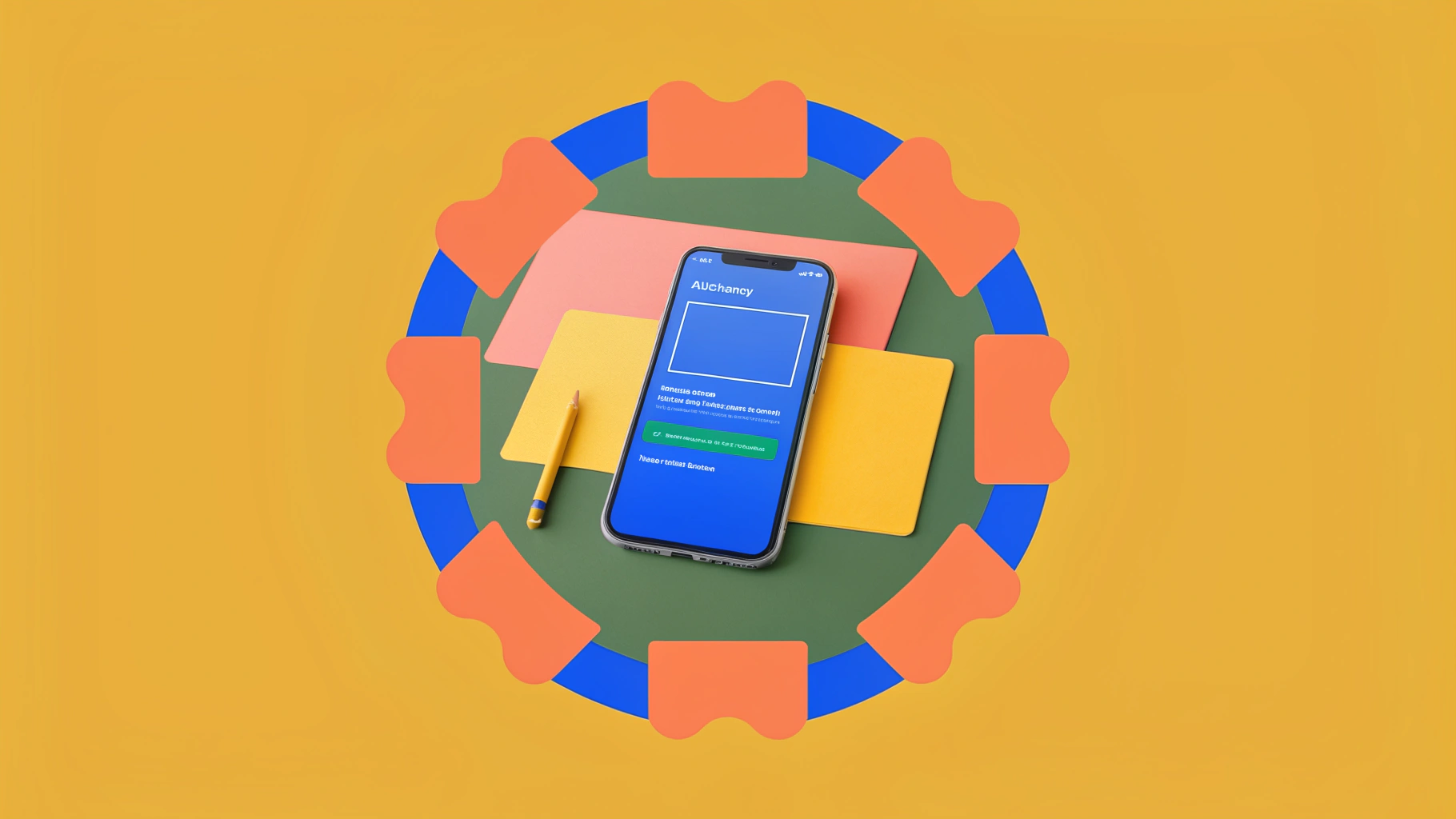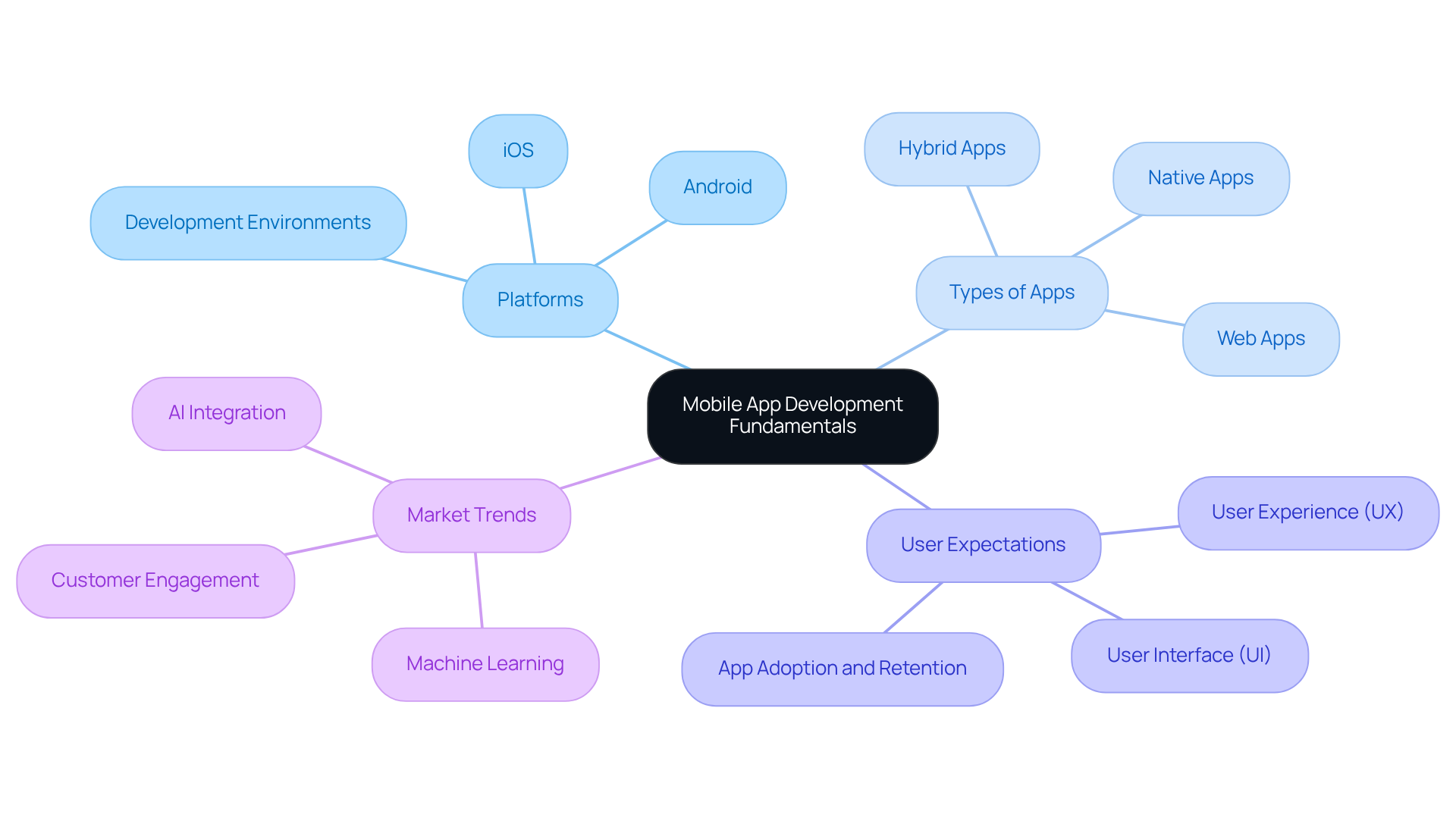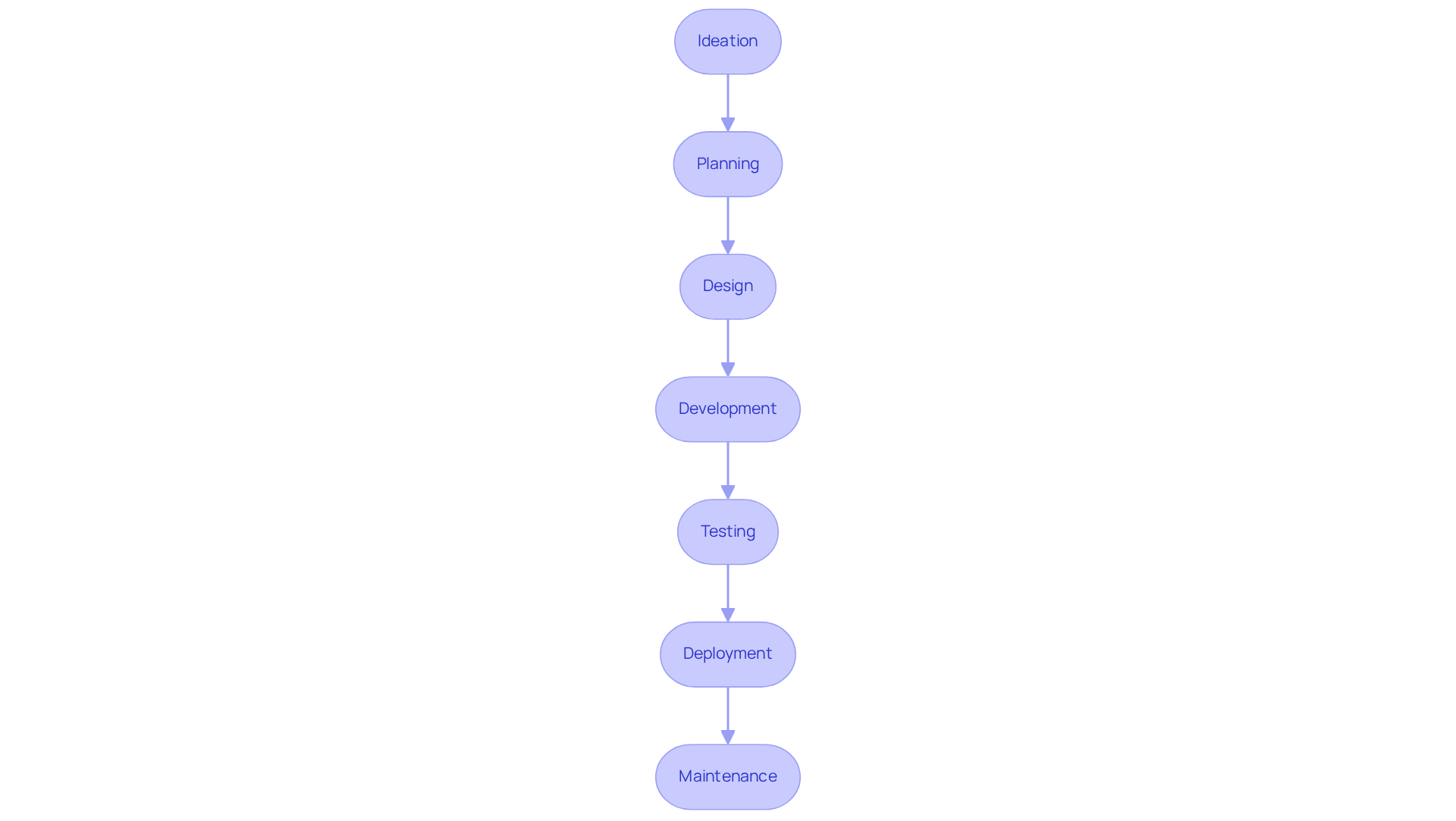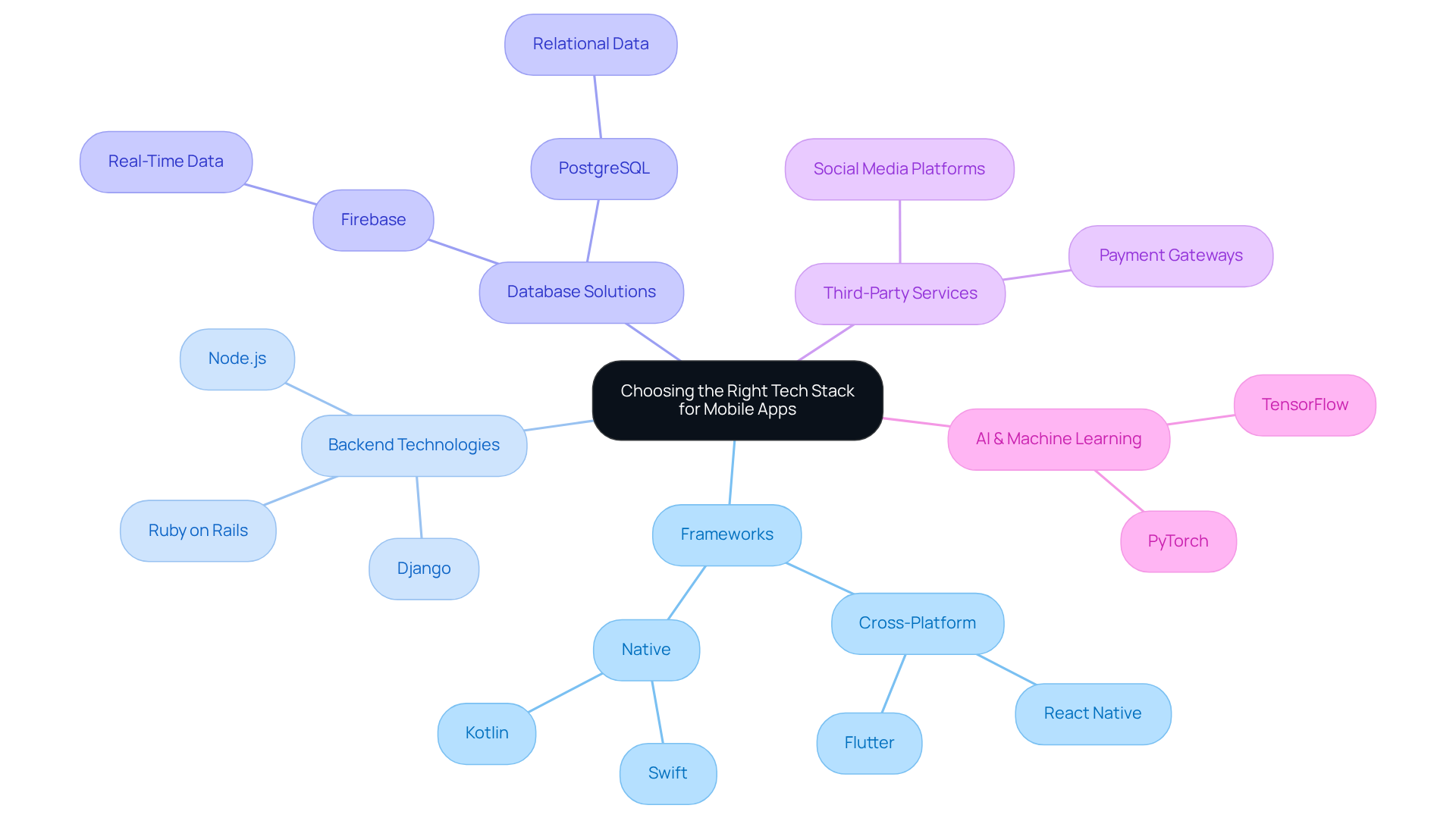AI
our blog
Master Mobile Phone App Development: A CTO's Essential Guide

Overview
Mobile phone app development represents a multifaceted endeavor that necessitates a comprehensive understanding of key platforms, various app types, user expectations, and prevailing market trends to forge successful applications. This article delineates a methodical, step-by-step approach to development, underscoring the significance of:
- User-centered design
- The selection of an appropriate tech stack
- The implementation of agile methodologies
These elements are crucial to ensuring that the app not only meets user needs but also adapts effectively to feedback. By adopting this structured approach, developers can enhance the likelihood of creating applications that resonate with users and thrive in a competitive landscape.
Introduction
Mastering mobile app development transcends mere technicality; it emerges as a strategic imperative for CTOs navigating an increasingly digital landscape. This guide thoroughly explores the essential components of mobile app development, providing insights that range from foundational concepts to advanced methodologies designed to elevate user experience and engagement. However, with the swift pace of technological advancements and evolving user expectations, how can leaders ensure their mobile applications distinguish themselves in a saturated marketplace?
Understand Mobile App Development Fundamentals
Mobile phone app development is a critical process that involves designing software applications tailored for mobile devices. To navigate this landscape effectively, it is essential to grasp several key concepts.
-
Platforms: Begin by familiarizing yourself with the major platforms, primarily iOS and Android, along with their respective development environments. Understanding these platforms lays the groundwork for successful mobile phone app development.
-
Types of Apps: It is vital to learn the distinctions between native, hybrid, and web apps. Each type of mobile phone app development presents unique advantages and limitations that can significantly impact your overall development strategy.
-
Expectations of Users: Acknowledging the significance of user experience (UX) and interface (UI) design is paramount, as these elements profoundly influence app adoption and retention. Consider how a well-designed interface can enhance user satisfaction and loyalty.
-
Market Trends: Furthermore, staying informed about current trends, such as the integration of AI and machine learning, is crucial. These advancements can enhance app functionality and improve customer engagement, positioning your application for success in a competitive market.

Follow a Step-by-Step Mobile App Development Process
The mobile phone app development process encompasses several key stages, each illustrating Studio Graphene's comprehensive approach to end-to-end digital product development services.
-
Ideation: This initial stage involves brainstorming and validating your app concept through market research and audience needs assessment. It aligns with the Discovery phase, where we thoroughly explore your concept to ensure its viability.
-
Planning: Here, we define the app's scope, features, and functionalities. By developing wireframes and experience narratives, we visualize the user journey, laying a solid foundation for the Design phase.
-
Design: In this stage, we focus on creating the UI/UX layout, emphasizing an intuitive and engaging experience. Our creative expertise shines as we transform ideas into visually appealing designs that resonate with users.
-
Development: In the mobile phone app development phase, this marks the beginning of coding the app, adhering to the chosen tech stack while following best practices for performance and security. It embodies the Build phase, where we leverage cutting-edge technology to bring your vision to life.
-
Testing: We conduct thorough testing to identify and rectify bugs, ensuring the app functions seamlessly across various devices and platforms. This phase underscores our commitment to quality assurance, essential for delivering a reliable product that meets customer expectations.
-
Deployment: Launching the app on relevant app stores is a critical step, and we ensure compliance with their guidelines. Our guidance emphasizes market readiness, maximizing your app's visibility in a competitive landscape.
-
Maintenance: Post-launch, we continuously monitor app performance and user feedback, implementing updates and improvements as necessary. Our commitment to your success extends beyond the initial launch, ensuring your app evolves in response to user needs.

Select the Right Tech Stack for Your Mobile App
Selecting the right tech stack requires careful consideration of several critical factors.
When it comes to frameworks for mobile phone app development, options like React Native or Flutter are ideal for cross-platform development. Alternatively, Swift and Kotlin serve as excellent choices for native applications. This decision should align with your project's specific goals and user experience expectations related to mobile phone app development.
For mobile phone app development, robust backend technologies include Node.js, Django, and Ruby on Rails. The choice in mobile phone app development depends on the unique needs of your application, including scalability and performance requirements.
- Database Solutions: Selecting a database that meets your data requirements is crucial. For real-time data, Firebase is a strong candidate, whereas PostgreSQL excels in handling relational data. Assess your data structure to make an informed choice.
In mobile phone app development, it's essential to identify any third-party services or APIs your application needs to integrate with. This may include payment gateways or social media platforms, which can significantly enhance functionality and user engagement.
- AI and Machine Learning: If your app could benefit from intelligent features, exploring AI frameworks like TensorFlow or PyTorch is advisable. These tools can help you incorporate advanced capabilities that set your application apart in a competitive landscape.

Implement User-Centered Design and Agile Methodologies
To create a user-friendly mobile app, it is essential to implement the following strategies:
-
User Research: Conducting surveys, interviews, and usability tests is crucial for gathering insights about user preferences and pain points. For instance, in our project with Alchemy Wings, we focused on understanding customer needs to develop an intuitive interface that simplifies the ordering process. This foundational step in mobile phone app development ensures that the app meets user expectations.
-
Prototyping: Developing both low-fidelity and high-fidelity prototypes allows for the visualization of the app's design and functionality before full-scale implementation. This method enables early identification of usability problems; our efforts demonstrated that prototypes significantly enhanced the experience for users, paving the way for a more refined final product.
-
Agile methodologies, such as Scrum or Kanban, are essential in mobile phone app development as they facilitate iterative processes and consistent feedback loops. This approach proved essential in our mobile phone app development project, allowing us to adapt swiftly to changing demands and feedback from participants, thus ensuring that the app remains relevant and user-centered.
-
Ongoing participant testing is vital in mobile phone app development to engage individuals in testing throughout the development process and ensure the app meets their requirements and expectations. In the case of Alchemy Wings, we implemented continuous testing stages that informed our development choices and prioritized features effectively, leading to a more successful outcome.
-
Feedback Integration: Utilizing user feedback to make informed decisions about feature enhancements and design adjustments is key to the app's evolution based on real user experiences. Our collaboration with Alchemy Wings included a robust feedback mechanism for mobile phone app development, which allowed us to continuously improve the app, ultimately enhancing the dining experience through seamless ordering and payment solutions.

Conclusion
Mastering mobile phone app development is an indispensable skill for CTOs, necessitating a thorough understanding of the various components essential for successful application creation. This guide underscores the importance of grasping fundamental concepts, adhering to a structured development process, and selecting the appropriate technology stack to satisfy user needs and market demands.
Key insights reveal the necessity of understanding different app types, user experience design, and current market trends, including the integration of AI and machine learning. Each phase of the development process, from ideation to maintenance, is vital for ensuring the app not only operates effectively but also resonates with users. Furthermore, employing user-centered design and agile methodologies cultivates an environment where continuous feedback and adaptation enhance overall product quality.
Ultimately, the journey of mobile app development transcends mere coding; it revolves around crafting meaningful experiences that meet user expectations and distinguish themselves in a competitive landscape. By embracing these principles and practices, CTOs and developers can ensure their applications not only succeed at launch but also continue to evolve and thrive in the ever-changing digital world.









